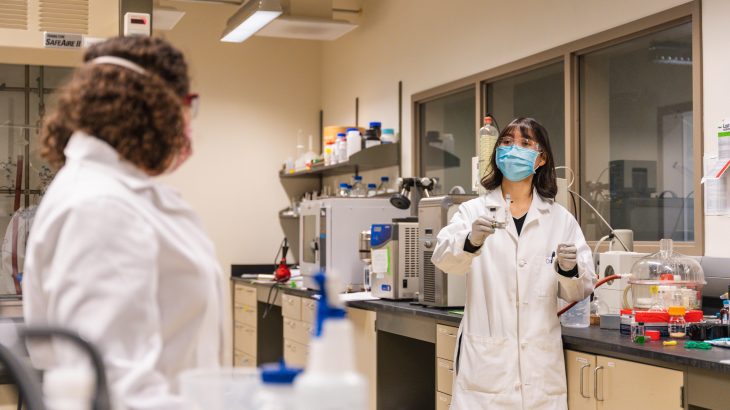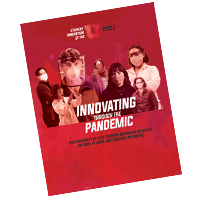U chemistry students Fangyuan “Daisy” Dong and Helena Haddadin are part of a team working to genetically modify cyanobacteria for more efficient ammonia production, which is an important ingredient in fertilizers. The rest of the team consists of other biology and chemistry students, ranging from undergrad to post-docs. Their primary interest in the project is the environmental impact, modifying the cells to do green ammonia synthesis. “It is very exciting to see how we can modify cyanobacteria to do something that it couldn’t before,” Haddadin said.
The current approach to producing ammonia is through the Haber-Bosch method, which uses natural gas and is inefficient given it is responsible for 3% of global carbon dioxide emissions. Biological ammonia synthesis by bacteria is a greener alternative. The primary source of inefficiency in biological nitrogen fixation is that there are limits on cell ammonia production. This production is regulated by cell requirement.
The idea is to use a foreign host that does not have the regulation pathways the bacteria does, so the nitrogen-fixing process is not regulated by cell requirement.
Through increasing cell efficiency and supplying external electrons, the chemical reaction can produce more ammonia per part than before. “This is the first time to realize a green and sustainable way of producing ammonia in cyanobacteria through electrosynthesis,” Dong said.
More articles like this in ‘Student Innovation @ the U!’
Find this article and a lot more in the 2021 “Student Innovation @ the U” report. The publication is presented by the Lassonde Entrepreneur Institute to celebrate student innovators, change-makers, and entrepreneurs.




